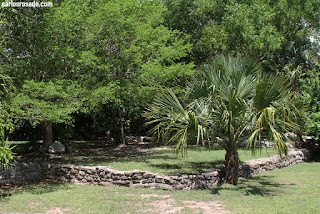Central America 2016 pt. 5 (Xunantunich and Cahal Pech)
To wrap out our tour of Central America, my mom, dad, tio Efren and I made our way to the Belizean archaeological sites of Xunantunich and Cahal Pech. Both sites are only about 15km away from each other and Xunantunich lay barely a kilometer or two from the Guatemalan border. Xunantunich is a wonderful site though getting to the archaeological zone involves a 2 km hike up a hill which can be fairly rough for some, especially with the sun blazing down on you. The upside is that if you get there early (which I did not on this occasion) it is fairly easy to spot exotic birds such as toucans and toucanets. One of the defining characteristics of of Xunantunich are the beautiful stucco friezes which still survive on the facade of the structure known as "El Castillo". In the Mayan language Xunantunich means "stone woman" and archaeological evidence suggests the site dates back to the pre-classic period, however most of the monumental construcción which can be observed today date to around the 5th century AD. For its part, the archaeological site of Cahal Pech (or "Place of the Ticks") is built on the top of a hill and likely served as a ceremonial complex and residential area for members of the nobility. The foundation of the site das as far back as 1200 BCE during the early formative period thus making Cahal Pech one of the oldest recognizably Maya sites in Meso-America. Despite the fact that the site does not cover a particularly large geographical area, it is jam packed with extremely impressive structures and unique arquitectural features. I hope you enjoyed the photos. I am thinking about taking a group from Merida to Central America next winter so if you are interested in coming with shoot me an email at carlos.rosado@gmail.com (availability is limited).


























































